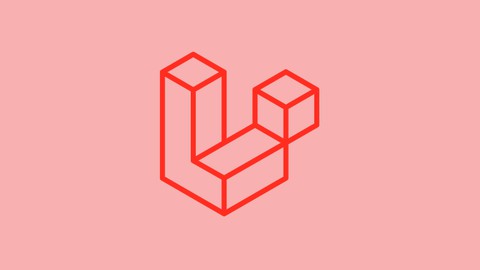
Learn Laravel 9 – Absolute beginner to building a Blog 2022
Learn Laravel 9 – Absolute beginner to building a Blog 2022, available at $44.99, has an average rating of 4, with 90 lectures, based on 11 reviews, and has 40 subscribers.
You will learn about Laravel application structure Laravel MVC Laravel Models Laravel Migrations Routing in Laravel Laravel Controllers Laravel application authentication Artisan Console Laravel Eloquent ORM Creating Migrations Squashing Migrations Migrations Structure Running Migrations Rolling back Migrations Many more items This course is ideal for individuals who are PHP students who would like to try working with a framework or Students with the knowledge of HTML and CSS who would like to use Laravel as their preferred backend. It is particularly useful for PHP students who would like to try working with a framework or Students with the knowledge of HTML and CSS who would like to use Laravel as their preferred backend.
Enroll now: Learn Laravel 9 – Absolute beginner to building a Blog 2022
Summary
Title: Learn Laravel 9 – Absolute beginner to building a Blog 2022
Price: $44.99
Average Rating: 4
Number of Lectures: 90
Number of Published Lectures: 90
Number of Curriculum Items: 90
Number of Published Curriculum Objects: 90
Original Price: $24.99
Quality Status: approved
Status: Live
What You Will Learn
- Laravel application structure
- Laravel MVC
- Laravel Models
- Laravel Migrations
- Routing in Laravel
- Laravel Controllers
- Laravel application authentication
- Artisan Console
- Laravel Eloquent ORM
- Creating Migrations
- Squashing Migrations
- Migrations Structure
- Running Migrations
- Rolling back Migrations
- Many more items
Who Should Attend
- PHP students who would like to try working with a framework
- Students with the knowledge of HTML and CSS who would like to use Laravel as their preferred backend.
Target Audiences
- PHP students who would like to try working with a framework
- Students with the knowledge of HTML and CSS who would like to use Laravel as their preferred backend.
I created this course with all levels of learning in mind. For absolute beginners, for intermediate and even advanced Laravel learners. Most of my courses focus on the practical aspect of Laravel but I realized that some of the people who join my Laravel courses are absolute beginners. That is why I created this course with beginners also in mind. This course is divided into 3 sections:
Section 1: Absolute beginners in Laravel
If you are an absolute beginner in Laravel, then you would like to start from this section.
In this section, we cover the core concepts of Laravel.
This will help the learner understand the concepts of Laravel before moving to part 2 where we put into application the concepts we learned in this section to build a simple users management system.
Section 2: User management project
In this section, we build a simple user management application utilizing Laravels basic CRUD functionality.
This should help the learner understand how to put the concepts we learned in the previous section in application.
Section 3: The main project(Blog Application)
This is the section that we build the main project. In this section, we will advance from the previous section to tackling an advanced project, where we are going to work on the user management system. For more information, please watch the introductory videos to have a preview of the project that we are going to work on.
Course Curriculum
Chapter 1: PART1 – Introduction to Laravel For Absolute Beginners
Lecture 1: The final Project – Blog Application
Lecture 2: Setting up PHP development environment
Lecture 3: Installing visual studio code and Composer
Lecture 4: Setting up Laravel application on your machine
Lecture 5: The request entry point of a laravel application
Lecture 6: Laravel Application Directory structure
Lecture 7: Artisan Console and Connecting the Laravel Application to the Database
Lecture 8: Laravel Migrations
Lecture 9: Laravel Migrations Part 2
Lecture 10: Laravel ORM Part 1
Lecture 11: Laravel ORM Models
Lecture 12: Introduction to Routing in Laravel
Lecture 13: Laravel Routing Part2
Lecture 14: Laravel Routing Part 3
Lecture 15: Laravel Routing Part 4
Lecture 16: Laravel Routing Part 5
Lecture 17: Routing in Laravel – Name route prefixes
Lecture 18: Retieving data from the table using Model Classes
Lecture 19: Interacting with database using Model Classes Part2
Lecture 20: Interacting with Laravel Models Part 3
Lecture 21: Deleting Data from the database using model classes
Lecture 22: Introduction to Controllers
Lecture 23: Single action controllers
Lecture 24: Resource Controllers
Lecture 25: Sending data to view files
Lecture 26: Sending Data to the View Files Part 2
Lecture 27: Laravel blade templating engine
Lecture 28: Blade template engine directives
Lecture 29: Blade template engine directives Part 2
Lecture 30: Including subviews directives
Lecture 31: Building layouts in Laravel
Lecture 32: Building layouts in Laravel- Template inheritance method
Lecture 33: CSRF directive in HTML forms
Lecture 34: Laravel Tinker- Laravel REPEL/ Laravel Command-line interface
Lecture 35: Laravel users authentication scaffolding using Laravel Breeze
Chapter 2: PART 2 : Absolute beginners Project- User management Application
Lecture 1: User management system – Setting up larvel project
Lecture 2: Saving users to the database
Lecture 3: Saving users to the database
Lecture 4: Users management application – Read part of CRUD
Lecture 5: Update and delete functionalities
Chapter 3: PART 3: BLOG APPLICATION
Lecture 1: Introduction
Lecture 2: Setting up new laravel project
Lecture 3: Setting up the frontend theme
Lecture 4: Integrating the frontend theme part2
Lecture 5: Integrating admin panel
Lecture 6: Cleaning up the admin panel
Lecture 7: Setting up the database migrations and models
Lecture 8: Connecting our application to the databse
Lecture 9: Running Migrations and Creating Category
Lecture 10: Alerting the user on Category creation functionality
Lecture 11: Setting categories and create category links
Lecture 12: Displaying the categories on the admin pane
Lecture 13: Edit and Update categories functionality
Lecture 14: Debugging our code
Lecture 15: Closable alert and category trashing
Lecture 16: Debugging trashing of categories
Lecture 17: Displaying trashed categories
Lecture 18: Displaying editing and deleting trashed categories
Lecture 19: Forcing delete restoring and pagination
Lecture 20: Posts CRUD – Setting up posts routes
Lecture 21: Setting Up Create Post view
Lecture 22: Posts CRUD Part 2
Lecture 23: Create Posts Part 3
Lecture 24: Saving the data from form to the database
Lecture 25: Create-category form validation
Lecture 26: Integrating CK-Editor to our application
Lecture 27: Image upload functionality
Lecture 28: Image upload preview
Lecture 29: Listing all the posts on admin side
Lecture 30: Updating posts
Lecture 31: Trashing the posts functionality
Lecture 32: Restoring and deleting trashed posts
Lecture 33: Restoring and deleting trashed posts part 2
Lecture 34: Setting up the frontend theme
Lecture 35: User authentication setup part2
Lecture 36: A few Changes, fetching users from the database and testing
Lecture 37: Promoting and trashing users
Lecture 38: Promoting and trashing users logic
Lecture 39: Demoting users
Lecture 40: Working on the user profile
Lecture 41: Working on user profile
Lecture 42: Updating User Profile
Lecture 43: Displaying user profile from all users list
Lecture 44: Working on the dashboard home
Lecture 45: Working on the admin dashboard – Dynamic data
Lecture 46: Displaying recent categories on the admin panel dashboard
Lecture 47: Debugging
Lecture 48: A few customizations
Lecture 49: Searching posts in admin panel
Lecture 50: Displaying posts on the client-side
Instructors
-
Simon Angatia
Full Stack Software Developer
Rating Distribution
- 1 stars: 0 votes
- 2 stars: 1 votes
- 3 stars: 2 votes
- 4 stars: 6 votes
- 5 stars: 2 votes
Frequently Asked Questions
How long do I have access to the course materials?
You can view and review the lecture materials indefinitely, like an on-demand channel.
Can I take my courses with me wherever I go?
Definitely! If you have an internet connection, courses on Udemy are available on any device at any time. If you don’t have an internet connection, some instructors also let their students download course lectures. That’s up to the instructor though, so make sure you get on their good side!
You may also like
- Best Video Editing Courses to Learn in March 2025
- Best Music Production Courses to Learn in March 2025
- Best Animation Courses to Learn in March 2025
- Best Digital Illustration Courses to Learn in March 2025
- Best Renewable Energy Courses to Learn in March 2025
- Best Sustainable Living Courses to Learn in March 2025
- Best Ethical AI Courses to Learn in March 2025
- Best Cybersecurity Fundamentals Courses to Learn in March 2025
- Best Smart Home Technology Courses to Learn in March 2025
- Best Holistic Health Courses to Learn in March 2025
- Best Nutrition And Diet Planning Courses to Learn in March 2025
- Best Yoga Instruction Courses to Learn in March 2025
- Best Stress Management Courses to Learn in March 2025
- Best Mindfulness Meditation Courses to Learn in March 2025
- Best Life Coaching Courses to Learn in March 2025
- Best Career Development Courses to Learn in March 2025
- Best Relationship Building Courses to Learn in March 2025
- Best Parenting Skills Courses to Learn in March 2025
- Best Home Improvement Courses to Learn in March 2025
- Best Gardening Courses to Learn in March 2025






















